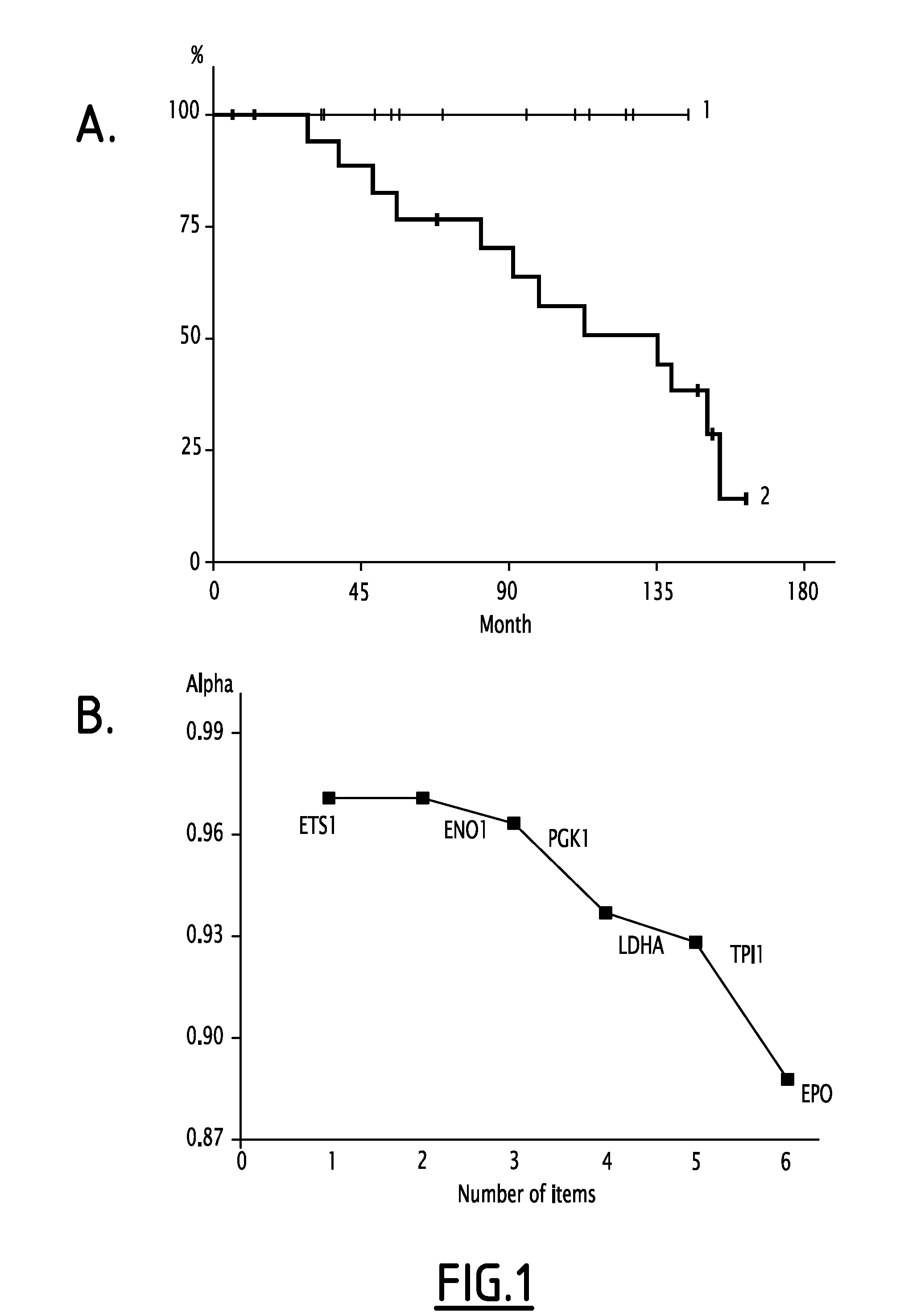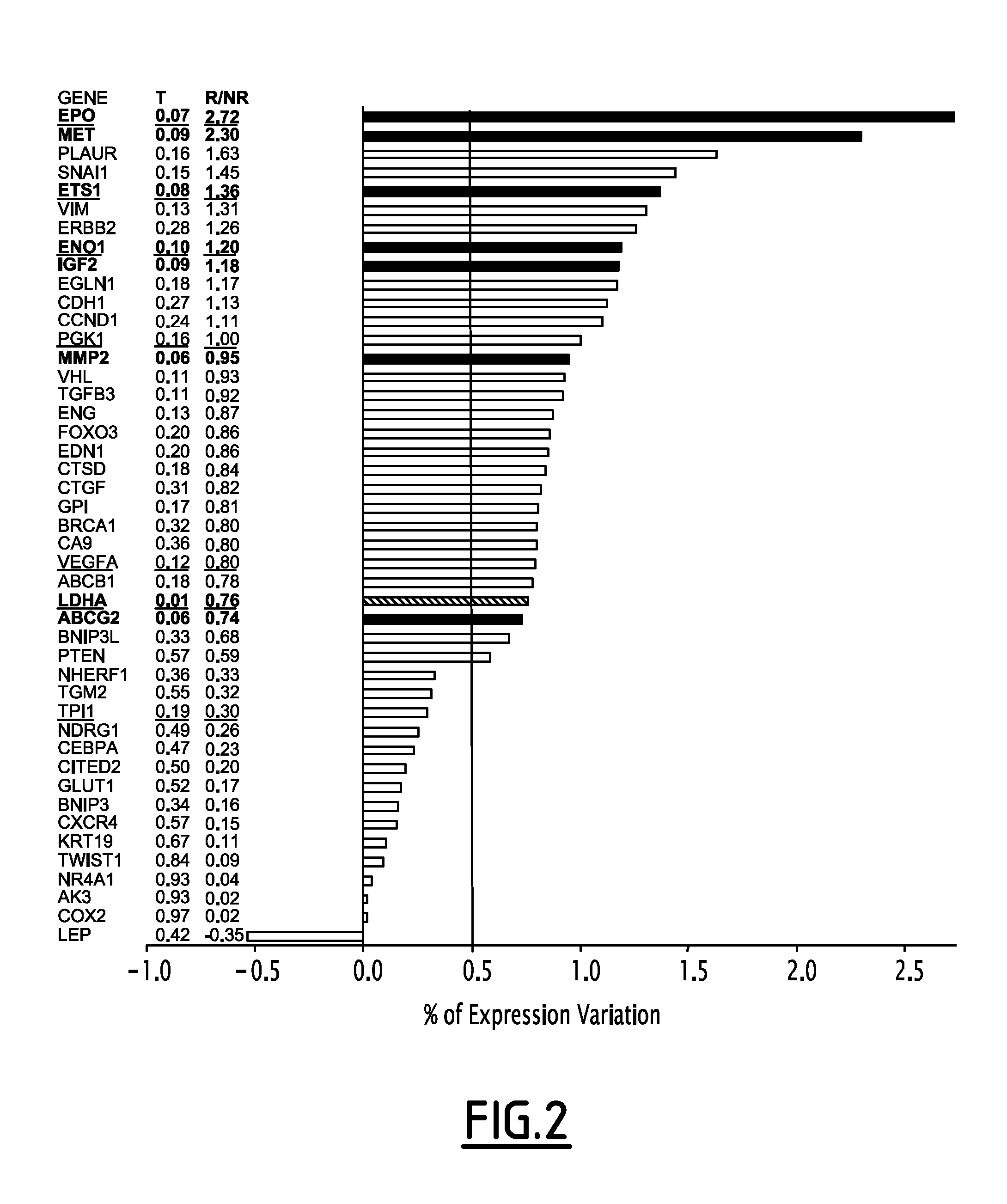Methods for predicting outcome of breast cancer, and/or risk of relapse, response or survival of a patient suffering therefrom
a breast cancer and outcome prediction technology, applied in the field of methods for predicting the outcome of breast cancer, and/or the response or survival of a patient suffering therefrom, can solve the problems of poor response, outcome and survival, and mammaprint® does not allow the assessment of the risk of relaps
- Summary
- Abstract
- Description
- Claims
- Application Information
AI Technical Summary
Benefits of technology
Problems solved by technology
Method used
Image
Examples
example 1
Materials and Methods
[0103]1.1. Patients
[0104]Forty patients with previously untreated primary invasive ductal breast carcinoma were included in this retrospective study. Initial staging comprised complete and detailed clinical examination including the International Union Against Cancer TNM (tumor size, nodes, metastases) classification. Ultrasound examination and bilateral mammography were also performed. Histopathological evaluation of the tumours was performed on core needle biopsies by Scarff, Bloom and Richardson (SBR) grading as modified by Elston and Ellis. One sample for each patient was used for DNA analysis by flow cytometry with EPICS V (Beckman-Coulter, Roissy, France). The status of oestrogen and progesterone receptors and HER2 were determined by immunohistochemistry on paraffin-embedded sections 3 μm thick. Immunostaining was performed with a Nexes automated immunostainer (Ventana, Illkirch, France). Sections were scored semiquantitatively by light microscopy by two p...
example 2
Results and Calculation of Risk Score of Relapse
[0112]Expression of all HypBiomarkers was quantified by RT-PCR using a Taqman low density array (Applied Biosystem). Relative quantities (RQ) were determined for 40 samples of patients suffering from early stage invasive ductal breast carcinoma. Several parameters, including those obtained by performing a Fisher test (F), a Student test (S) or a Kruskall-Wallis test (H), were determined. A comparative analysis of the results between different groups allowed identifying which Hypbiomarkers were significantly expressed between the different groups. A clustering was then carried out using the caGEDA software (expression threshold: 1.5, K-Mean clustering, J5 statistical test). Using a logistic regression model, HyBiomarkers which allowed predicting the status of a patient were identified.
[0113]It was found that the EPO, ETS1, ENO1, PGK1, VEGFA, LDHA and TPI markers are significantly overexpressed in the group of patients that relapsed. It ...
PUM
 Login to View More
Login to View More Abstract
Description
Claims
Application Information
 Login to View More
Login to View More - R&D
- Intellectual Property
- Life Sciences
- Materials
- Tech Scout
- Unparalleled Data Quality
- Higher Quality Content
- 60% Fewer Hallucinations
Browse by: Latest US Patents, China's latest patents, Technical Efficacy Thesaurus, Application Domain, Technology Topic, Popular Technical Reports.
© 2025 PatSnap. All rights reserved.Legal|Privacy policy|Modern Slavery Act Transparency Statement|Sitemap|About US| Contact US: help@patsnap.com


